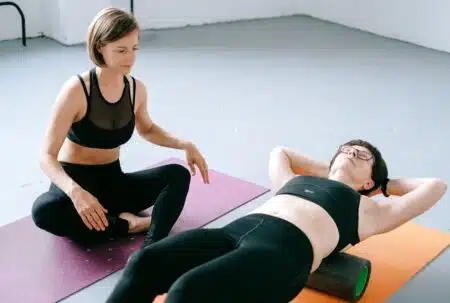Take a slow, deep belly breath, allowing your lungs to fully expand as air rushes in. Feel a wave of relaxation wash over you as you gently exhale tension from your body and mind. This simple yet profound act of conscious breathwork powerfully links body, thoughts, emotions, and spirit—the core pillars of health and wellness. An emerging body of research now clearly demonstrates how purposeful, diaphragmatic breathing benefits nearly every system in the body. By incorporating breathwork into lifestyle, self-care routines and exercise, one can tap into an innate internal guidance system that unlocks holistic healing on multiple levels.
Defining Breath and Breathwork
Breath refers to the flow of air moving in and out of the lungs, delivering life-giving oxygen to cells throughout the body. Breathwork involves conscious, controlled breathing techniques designed to maximize this inflow of oxygen while also directing the breath’s movement for targeted benefits. Most commonly, breathwork entails slow, rhythmic breathing directed by the contraction and relaxation of the diaphragm muscle located under the lungs. This is referred to as diaphragmatic or belly breathing.
The typical resting adult respiratory rate falls between 12 to 20 breaths per minute. Breathwork techniques focus on slowing this rate substantially while working to deepen and strengthen each inhale and exhale. The most evidence-backed breathing rate for both stress relief and energy enhancement falls around 5 to 7 breaths per minute. This pace activates the parasympathetic “rest and digest” nervous system while enabling significantly more oxygen-rich air to enter the lungs with each breath.
Understanding Breath’s Broad Whole-Body Impact
At its most basic and automatic level, breathing ventilates the lungs, carrying oxygen down to the cellular level to fuel basic metabolism and energy production. Breathing simultaneously removes accumulated waste gases like carbon dioxide from the bloodstream. However, research shows breath also intimately connects to brain regions that regulate cognition, thoughts and emotions.
The brainstem houses primary centers controlling respiratory rhythm and pattern. The higher cerebral cortex can override this automatic control—which is why we can make adjustments like voluntarily slowing our breath. Additionally, the limbic system governing emotions directly links with breathing centers. This explains how anxiety states, excitement and anger can instantly accelerate respiration rate and depth.
By taking charge of one’s breathing pace and depth through purposeful breathwork techniques, profound shifts occur in both mind and body.
Fight-or-Flight vs Rest-and-Digest States
In tense or frightening situations, the body instinctively moves into a protective “fight-or-flight” mode, triggered by activation of the sympathetic nervous system. As part of this cascade, quick shallow “chest breathing” kicks in to prime the body for action. However, chronic unmanaged stress keeps the nervous system perpetually activated. Shallow rapid breaths prevent full oxygen exchange, allowing waste carbon dioxide to accumulate. This then triggers more feelings of distress—fueling the stress response fire.
Through practices focused on slowing the breath and intentionally breathing deeper and lower into the belly, the parasympathetic nerves activate instead. This signals safety to body systems, triggering widespread relaxation. Over time and with consistency, purposeful breathwork literally retrains the nervous system to default back to homeostatic balance rather than constant high alert.
Additional Whole-Body Benefits of Deep Belly Breathing
Beyond direct nervous system regulation, research continues unveiling diverse whole-body and mind advantages achieved through regular practice of purposeful, diaphragm-driven breathing techniques:
- Immunity Enhancement: Slow, strong inhales deliver more oxygen to tissues while assistive lymphatic action removes toxic debris—together optimizing immune cell production and efficiency. This explains why consistent breathing-focused practices like yoga, Qigong and pranayama correlate to fewer sick days.
- Spinal Health: When breathing with intentional engagement of the belly, the dome-shaped diaphragm fully descends, taking pressure off spinal and chest structures while gently mobilizing the spine. This strong core activation improves posture and back comfort over time.
- Organ Function: As the diaphragm powerfully drops with each slow inhale, it gently compresses the liver, stomach and intestines. This natural internal massage boosts digestion, metabolism and waste elimination processes.
- Cellular Detoxification & Energy Production: Conscious breathing fuels cellular cleansing by significantly boosting oxygen delivery to mitochondria– the “power plants” inside each cell. Forceful exhales clear waste gases and free radical compounds.
- Brain Optimization – Specific breathing rates balance right and left brain activity, reducing anxiety and depression while boosting motivation via elevated serotonin, dopamine and GABA.
The Holistic Healing Power of Breathwork Techniques
Understanding breathwork’s multifaceted effects across body systems both scientifically and intuitively through ancient practices like Pranayama, numerous techniques exist to consciously harness breathing’s healing potential:
- Establish a Daily Breath-Focus Ritual – Bookend your day with 5-10 minutes of calm belly breaths. This begins retraining the nervous system toward homeostasis.
- Harness Breath’s Power During Exercise – Sync movement with inhales and exhales to garner strength, endurance, and inner balance in everything from walking to weights. Let the breath lead the internal tempo.
- Use Breath as a Transitional Ritual – Between tasks or events, pause to inhale peace and exhale tension. Conscious breathing immerses you into the now.
- Learn Coherent Breathing – For maximized mindfulness and stress relief, learn this research-backed technique of 5 seconds inhale; 5 second exhale.
- Address Underlying Restrictions – Those with postural imbalance, injuries, or pain may benefit greatly from customized breath coaching targeting the areas of greatest restriction. Physical and respiratory therapists can help craft a personalized breathwork plan.
Ancient Wisdom Meets Modern Science: How Breathing Facilitates Holistic Healing
Yogic texts and medical research reveal fascinating intersecting explanations for how conscious respiration drives homeostasis and healing:
- Stimulates Vagus Nerve: This key parasympathetic channel links gut, heart and brain—further explaining breathwork’s anxiety-relieving effects.
- Boosts Blood Flow: Slow deep breathing massages blood vessels as oxygen saturation increases, enhancing circulation while lowering blood pressure chronically.
- Supports Lymphatics & Immunity: Inhalation and exhalation drive lymphatic flow and immune cell mobility, flushing tissues of waste and pathogens.
- Balances Brainwave States: Specific yogic breathing balances right and left brain hemispheric activity, conferring relaxation along with emotional buoyancy and determination via elevated serotonin, dopamine and GABA.
- Triggers Positive Neurotransmitters: Conscious yogic breathing stimulates ojas (the pure essence of lifeforce) production while eliminating toxins for improved constitutional strength and resiliency.
The Bottom Line: Your Breath Holds the Key to Holistic Wellness
Our breath not only delivers the oxygen sustaining life, but also connects us to an innate inner wisdom that unlocks deep healing capabilities across body, mind and spirit when harnessed consistently. Diaphragmatic breathing triggers the relaxation response while reducing circulating stress hormones over time. The heightened oxygenation breathwork confers optimizes digestion, boosts immunity, improves posture, elevates mood, and connects you with embodied intuition.
By consciously working with the breath, you tap into your inner pharmacy of neurotransmitters, hormones and energetic forces which harmonize the whole self. Start implementing basic belly breathing or explore the growing field of breathwork modalities to elevate your vitality across physical, mental, emotional and spiritual realms. Your breath holds the key to holistic wellness and balance.



